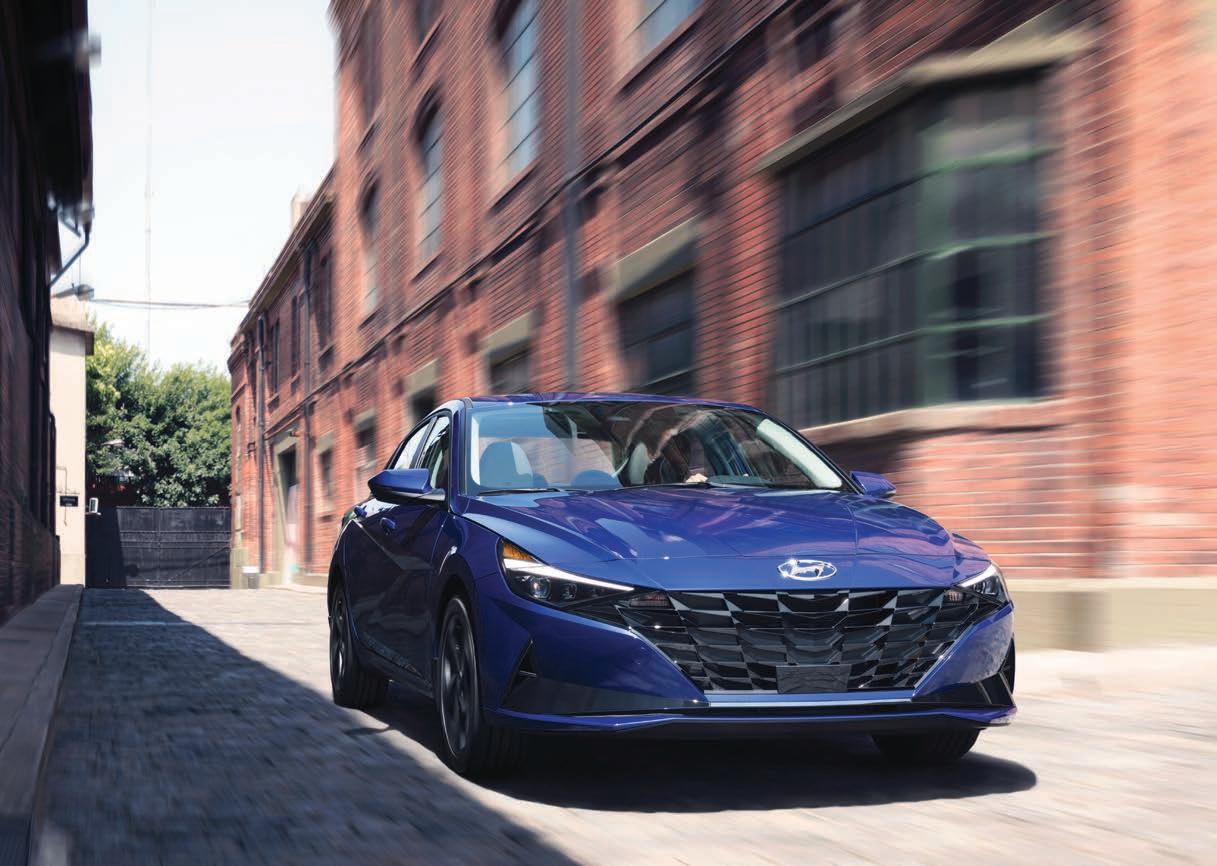
27 minute read
EMERGENCY PREPARATION
BY SANJA CANCAR-TODOROVIC
CONFRONTING RISK
COVID-19 MEANS SUPPLY CHAINS MUST FOCUS ON RISK MANAGEMENT MORE THAN EVER
The COVID-19 pandemic has driven digital transformations across many organizations, forever changing the traditional business model and how organizations work. Moreover, this global pandemic has elevated our dependence on our supply chains and the importance of robust vendor governance strategy as part of every business’s continuity and disaster recovery plan.
The pandemic revealed how unprepared the supply chain was for a major global business disruption. Many businesses already had business continuity and disaster recovery plans to cope with a full range of potential emergencies from both natural and human causes. However, the majority of them did not have the scope wide enough to cover the global economic shutdown brought about by COVID-19; even fewer had plans that integrated with the business continuity and disaster recovery plans of their most strategic high-risk vendors. As a result, 94 per cent of Fortune 1000 companies have seen supply chain disruptions, in addition to the challenges around business operations and employee health and welfare. And while some areas, like retail, will take a lot longer to recover, it is important for all industries to reassess their resiliency and put adequate measures in place to mitigate the risks that we have encountered as a result of COVID-19.
DISASTER PREPPING
Business continuity and disaster recovery plans must include business continuity plans of strategic high-risk vendors. Such plans (for both organizations and their vendors) must evolve from the typical types of disaster scenarios, to now include disruptions that we have encountered in 2020 thus far, along with ones that might arise as commerce and essential services continue under the shadow of the pandemic.
Focusing on the vendors and supply chains, the best starting point would be a review of contracts, ensuring that they all include adequate business continuity plans, as well as the steps for the plan’s execution clearly outlined in a RACI chart (responsible, accountable, consulted, informed). For the vendors that already satisfy the above mentioned point, it is crucial to confirm if they are already operating under business continuity plans. If not, do they anticipate invoking such a plan? In either case, what is the availability of resources and personnel required to continue to perform and maintain the supply of goods and services?
These types of conversations, along with any augmentation of their plans, are a lot easier to tackle with a robust vendor governance strategy, where the business and the vendors are having regular monthly/quarterly business reviews as a platform to work on any business
Sanja CancarTodorovic is director – strategic relationships, global real estate asset management, at Manulife.
operations challenges, as well as the potential resurgence of challenges associated with the current pandemic.
FOCUS ON STRATEGY
Conduct an end-to-end supply chain risk assessment and devise a robust strategy. Vendor rationalization has always been the most cost-effective, operationally efficient long-term strategy. Nevertheless, COVID-19 has taught us a valuable lesson on the risk of having all your eggs in one basket. Those organizations that over-rationalized their vendor base have found themselves in a bigger predicament than those who focused on vendor diversity.
A strategy would be to categorize your vendors into local and international. While international vendors are usually a lot larger and thus have better economies of scale, as a business it is crucial to assess whether the cost of supply is overshadowed by the lengthy lead times, transportation logistics, border-crossing disruptions and the overall demand put on the international vendors that might force them to prioritize their customer needs based on different factors. Establishing a tier-two vendor base – a base of local, smaller providers limited in their geographic coverage – can be a saving strategy during a crisis, even if the cost of the goods or services they provide is not on par with the tier-one vendors.
A great example of this that we have all experienced, is the procuring of PPE from April to June of this year. Those businesses that had the tier-two vendors in their rosters able to supply PPE did not struggle with procurement challenges, transportation logistics, quality issues and the massive price gouging that the rest of us went through.
Go back to basics, such as demand versus supply, assessing the cost of holding inventory on hand versus the risk of inventory scarcity in the future. In most cases, supply chains have
been designed on the principle of lean-machine (minimal inventory on hand, drop ship options, just-in-time deliveries and so on). In the example of PPE – where for the long foreseeable future there will be a need for it regardless of the industry – there is a case to be made for holding some of that low-cost, low-maintenance inventory on hand as a back-up plan to the tier-two vendor back-up plan.
However, regardless of tier-one or tier-two vendors, a robust vendor governance strategy is critical for a sustainable supply chain. As part of the vendor governance strategy, it is important to implement reporting tools and frequently monitor risks and mitigating factors, as well as any impacts that it might have on both the vendor business operation and your organization. Partnering with your vendors and collaboratively and proactively (not reactively) addressing any business operations challenges, including business continuity plans, is the only way to remain one step ahead of any potential disruptions.
GET TECH SAVVY
Stay on and evolve the digital transformation journey that was amplified by COVID-19. It is obvious by now that the pre-pandemic way of doing things is behind us, so embrace digital transformation, technology and the Internet of Things (IoT). By doing so, massive and pervasive disruption caused by this global pandemic will have minimal chance of being repeated in the future.
Start by focusing on process automation, completely cutting out the no- or low-value work, and reinvesting those resources into different technologies and IoT networks, such as enterprise resource planning (ERP) and material resource planning (MRP) systems, that will shift business faster and more efficiently across the entire supply chain. Embracing the digital transformation and investing in supply chain is key to keeping the supply chain stable amid future business disruptions. COVID-19 is a wake-up call for the entire supply chain ecosystem, shouting loud and clear that better technology is needed in this effort.
As the saying goes, ‘never waste a good crisis.’ Now is the time to review and assess all the lessons learnt of the past six months, revamp the supply chain and vendor governance strategy and integrate it into your organization’s business continuity and disaster recovery plans. It is time that we all plan for the best, but truly be prepared for the worst, going forward. SP
Connected and protected. Coming soon. The all-new ELANTRA.
The all-new Elantra is about to make its debut in Canada. Designed with a lower and wider profile and strikingly aggressive stance, our fully reimagined Elantra sets a new standard for sportiness in compact sedans.

In other words, it’s the perfect new addition to your fleet to help keep your business moving.
Inside, leading-edge tech and safety redefine the Elantra far beyond expectations. Stay connected with available wireless Apple CarPlayTM∆ and Android AutoTM◊ smartphone connectivity and stay protected with our available Hyundai SmartSenseTM technologies to help keep you safe – including Forward Collision-Avoidance Assist with Pedestrian, Cyclist and Junction-Turning Detection.
The all-new Elantra. Arriving late 2020.
Kevin Forodi
Senior Manager, Fleet Sales, CPO and Remarketing kforodi@hyundaicanada.com (905) 948-6701
Julian Cheng
Fleet Specialist jcheng@hyundaicanada.com (905) 948-6764
Naval Khan
Fleet and Remarketing Analyst nkhan@hyundaicanada.com (905) 948-6746
hyundaicanada.com
Fleet Management
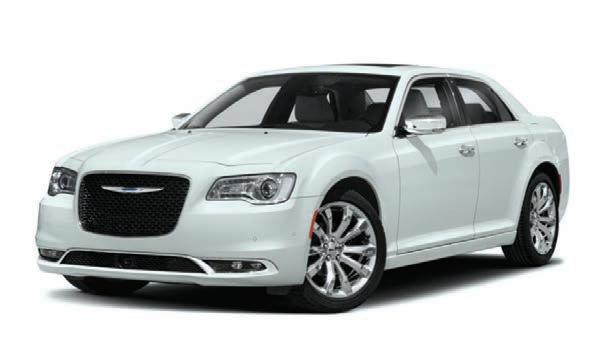
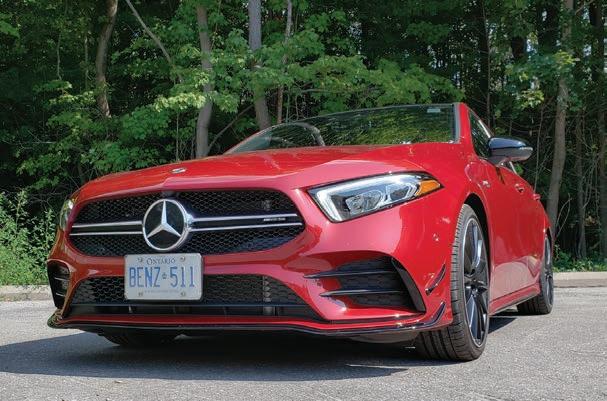
26
22 Executive rides All-new executive vehicles for 2020. 24 Taming fleet spend Tracking fuel to manage costs. 26 Road test Driving the 2020 Mercedes-AMG A 35 4Matic hatchback. 28 Where rubber meets road Care and maintenance of tires for fleets.
Fleet Management is a special section of Supply Professional magazine. It is an important resource for Canadian supply professionals who recommend, select and manage fleet vendors and service providers. EDITORIAL INQUIRIES: Michael Power, 416-441-2085 x110, michael@supplypro.ca ADVERTISING INQUIRIES: Alex Papanou, 416-441-2085 x101, apapanou@iqbusinessmedia.com
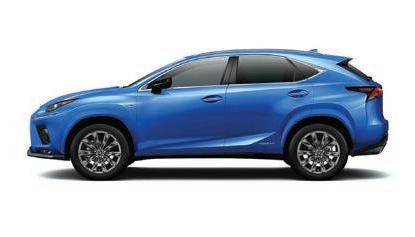
Hyundai Palisade
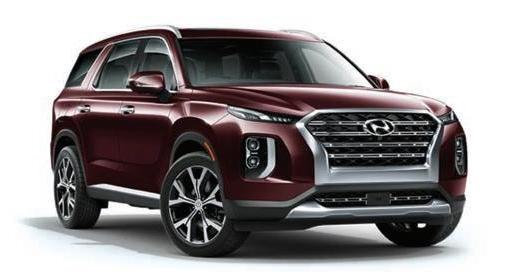
The Palisade is a full-size luxury SUV with seating for eight, powered by a 291hp, V6 engine. New for 2021, Hyundai adds an even more upscale, top-spec Calligraphy trim featuring standard all-wheel-drive, unique grille and exterior lighting, 20-inch wheels, quilted leather upholstery, suede headliner and perforated leather-wrapped steering wheel. All Palisades now come with standard LED headlights, Apple CarPlay and Android Auto. Mid-range models future 10.3-inch display, navigation, Sirius XM radio and semi-autonomous driving aids. Front-wheel drive is standard, with available all-wheel drive on all but base models.
Chrysler 300
While the current sedan enters its 16th year, the 300 badge was actually introduced in 1955. Chrysler’s rear-wheel-drive sedan may be aged, but has lost none of its swagger. For 2021, it’s offered in only three trim levels, powered by a 292hp, V6 or optional 363hp V8 – both mated to an eight-speed transmission. Standard are 8.4-inch touchscreen with Apple CarPlay and Android auto, but you’ve got to step up to a higher trim to get active safety technology or all-wheeldrive. The big sedan offers plenty of leg room and trunk space coupled with old school good looks.
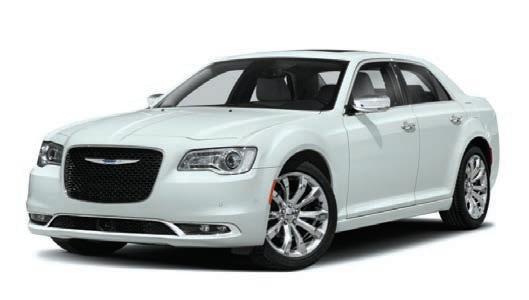
Fall fancy A look at executive rides for 2021
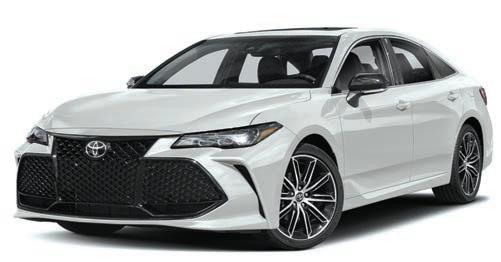
While autumn’s vivid palette paints a pretty reminder that another year is drawing to a close, it’s a time of new beginnings for automakers. Long before 2020 finally shows itself out, a new crop of vehicles will be rolling off the production line – with some already making their way to dealerships now. Among these are several premium sedans and SUVS that fall under the executive rides umbrella. Here are just a few of those highlights.
Lexus NX 300
Lexus’s compact luxury crossover NX 300 returns for its sixth year with only subtle changes. In addition to new low-profile wiper blades and power folding, auto-dimming, reverse tilt mirrors, a brand-new Nori Green Pearl replaces Blue Vortex Metallic on the paint wheel. Blind spot monitoring with rear traffic alert is now standard with Lexus’s Safety System driver safety technology bundle. Available trims include the NX300, NX300 F Sport, NX 300h and a limited edition NX 300h F Sport Black Line. Powertrain choices are a 235hp, four-cylinder with six-speed transmission and the 194hp hybrid mated to a continuously variable transmission.
Toyota Avalon
Toyota’s lovely, yet understated flagship sedan finally adds available all-wheel drive to its list of features. Also new for 2021 is a new Nightshade Edition on sporty XSE models, featuring black 19-inch wheels and black exterior trim. Android Auto joins its connectivity features and hybrid models now have a space-saving, compact battery pack. Powertrains are a 301hp V6 or 215hp hybrid, while Touring models come with adaptive suspension.
Mercedes Benz S-Class

The flagship of the Mercedes sedan lineup, the venerable S-Class has for years been a rolling ode to luxury and success. The latest model aims to build on that legacy with state-ofthe-art technology, a roomier, more luxurious interior and innovative new safety features. Highlights include a new active air suspension, rear wheel steering for cornering stability, an enormous OLED touchscreen and a three-dimensional gauge pod. There’s a choice of two powertrains: a 429hp turbocharged six cylinder, or 496hp twin turbo V8, both mated to a nine-speed transmission and standard all-wheel drive. A plug-in hybrid model is slated to arrive later with nearly 100km of range. The first Ford designed specifically as an electric vehicle, the Mustang Mach E uses the emotional appeal of its heritage nameplate to help launch this new crossover. With choice of rear- or all-wheel-drive, available hands-free semi-autonomous driving, and up to 480kms of range, the Mustang Mach E is a proper fiveseater offering genuine crossover utility. A GT performance-badged model will boast 459hp and can scoot from 0-100km/hr in just over
Mitsubishi Outlander
Arriving in the spring of 2021, the fully redesigned Outlander is bigger, boasts more advanced technology, and according to Mitsubishi, will be the quietest and best Mitsubishi ever to be sold in Canada. As part of the new Nissan alliance, it will ride on the same platform as the Nissan Rogue. The Outlander PHEV, the world’s best-selling plug-in hybrid, will reportedly offer a more refined electric drive system with greater range and a more powerful engine.
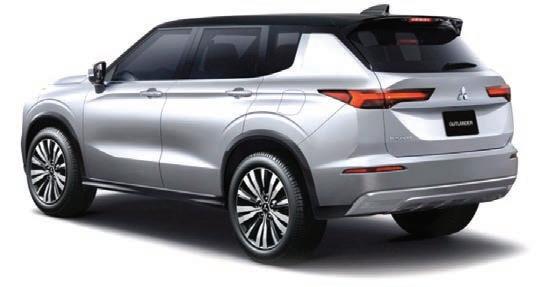

3.5 seconds. The Mach E comes standard with Ford’s CoPilot360 suite of safety systems, including lane keeping assist, blind spot monitoring, frontal collision warning and automatic braking. With similar price and performance, it will compete directly with Tesla’s Model Y SUV.
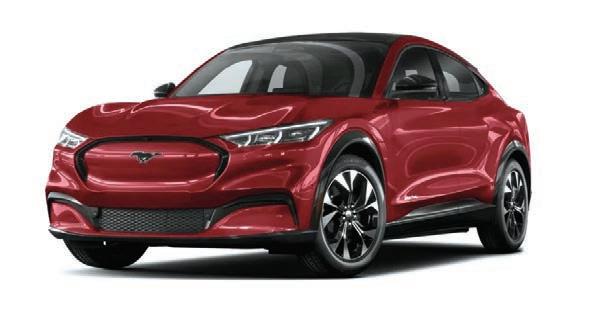
Nissan Maxima
Although rumoured to be discontinued in the near future, Nissan’s flagship Maxima sedan celebrates four decades of production with a new Limited 40th Anniversary Edition, featuring unique badging, red leather seats, 19-inch black alloys, and two-tone paint with black roof. All Maximas come standard with a 300hp V6 and Nissan’s Safety Shield suite of driver assistance tech, including intelligent cruise control, forward collision warning, lane departure warning, blind spot warning, traffic sign recognition, rear view monitor and rear cross traffic alert. Available are heated front and rear seats, panoramic sunroof, upgraded leather, adaptive cruise control and memory settings.
Subaru Ascent
The largest vehicle in Subaru’s lineup, the Ascent is a three-row SUV ideal for four-season family outings. With Subaru’s trademark asymmetrical all-wheel-drive system and 250 horsepower, the Ascent can haul a camper or boat trailer in addition to seven passengers. Optional are blind spot monitoring, heated front seats, wifi hotspot, rear cross traffic alert and power driver’s seat. New for 2021 are LED headlights that turn with the steering wheel and automatic high beams, standard across the lineup.
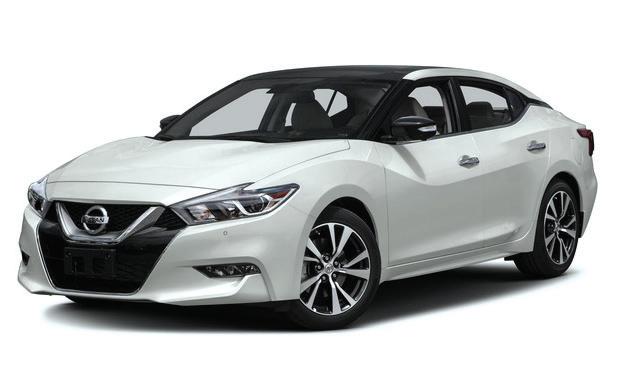
Chasing fuel savings
Fixed and variable rates
Ken Robinson is market research analyst at Motus.
Despite the rise of remote work, driving remains essential to many business aspects. From onsite meetings to deliveries and more, there are employees who need mobility. Every business must choose the best approach for its vehicle program. But different approaches can impact employee satisfaction and the bottom line.
Some components of driving costs remain stable. The price paid for a vehicle doesn’t change after the purchase. Other driving costs change all the time. Fuel is volatile and can be different every time a driver fills up. Since January 2019, fuel costs have made up 19.9 per cent of average driving costs. But fuel made up a different portion of driving costs every month.
The volatile nature of fuel prices is one reason that paying every employee the same amount is not the best solution. It sounds like a good approach. It’s easy to manage. But the result is not fair to employees. Mileage reimbursements that pay everyone the same for every kilometre don’t consider geographic costs. Employers then overpay employees in some areas while underpaying others.
In the US, the Internal Revenue Service (IRS) mileage standard rate is often used as a reimbursement method, but this is not an accurate representation of the costs where each employee lives and drives. Since the standard doesn’t account for driving costs that fluctuate based on geography and time of year, businesses using the rate to reimburse mid- and high-mileage workers are likely to give reimbursements that do not reflect actual driving costs. Similarly, the Canada Revenue Agency (CRA) allows individuals to deduct business mileage on a cost-per-kilometre basis through the CRA mileage rate, or automobile allowance rates. Again, it is not a fixed value and can vary year to year.
The IRS mileage standard dropped from 58 cents in 2019 to 57.5 cents in 2020. The same year, the CRA mileage rate increased from 58 cents per kilometre to 59 cents per kilometre for the first 5,000 kilometres driven, and drivers are reimbursed 53 cents for each additional kilometre. There is another four cents per kilometre in the Northwest Territories, Yukon and Nunavut. Throughout the year, actual driving costs changed month to month in both countries based on variables like the cost of gas, local taxes and insurance premiums.
When employers use a onesize-fits-all approach regardless of location or individual situations, they end up spending more than they need to on mileage. This creates winners and losers by over- or under-reimbursing drivers for their costs – which can occur at any time throughout the year as actual driving costs fluctuate while the IRS or CRA mileage rates remain the same throughout the year.
Car allowances are another popular one-size-fits-all approach. While allowances are easy to manage, they also don’t reflect geographic cost differences, and are not fair to every employee.
Another drawback to car allowances? They are a fixed cost for employers. No matter how many miles driven each month, employers pay the same. Allowances are treated as compensation, meaning they are taxed like all other income. This tax waste impacts both employees and employers.
For example, for every $100 taxable stipend, $38 is lost to taxes in the US. This means that employees with a $575 monthly car allowance will only take home $393 of that stipend. Likewise in Canada, a car allowance will be considered a taxable benefit if an employee or officer is paid a per-kilometre rate that the CRA considers too high or too low
Driving costs change every month
CRA rate
Actual driving costs
58¢ 59¢ (and thus not reasonable), or a flat rate allowance that is not based on the number of kilometres driven.
The fixed and variable rate (FAVR) reimbursement methodology remains a flexible solution in any economy. By breaking the reimbursement into fixed and variable costs, companies can react to the market’s conditions no matter how volatile they get. Fixed costs are constant month over month but vary from employee to employee. They include things such as insurance premiums, license and registration fees and taxes and depreciation. On the other hand, variable costs vary month over month and are based on the number of business miles driven, including gas, oil, maintenance and tire wear.
With FAVR, fuel price fluctuations are reflected in every reimbursement and each fixed and variable cost component is localized to the places employees work and drive. The result is a fair and accurate reimbursement.
Especially due to the economic uncertainty from the pandemic, leaders are looking for ways to add both flexibility and efficiency to business expenses. The IRS and CRA mileage rates are recommended for high-mileage drivers only (Over 5,000 business miles or 5,000 business kilometres, respectively). For others, alternate methodologies like FAVR programs let employers quickly reduce tax waste while staying flexible to scale vehicle program expenses up or down as necessary. FM/SP
Visit us at subarufl eet.ca
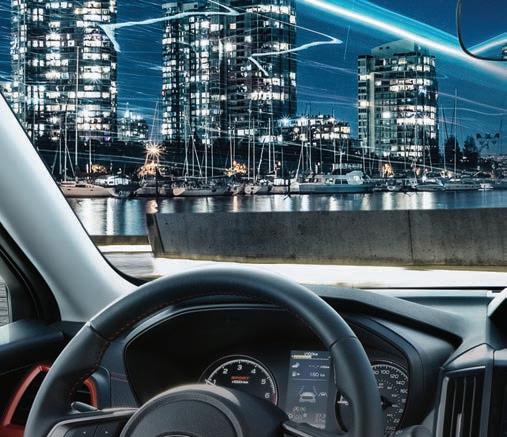


An offi ce with a thousand views.
2020 ASCENT
IIHS TOP SAFETY PICK On models with specifi c headlights

2020 FORESTER IIHS TOP SAFETY PICK+



Built for performance and security

2020 OUTBACK
IIHS TOP SAFETY PICK+ On models built after October 2019
This innovative active safety system is like a second pair of eyes watching out for you, warning and even aiding your ability to avoid potential danger. Predictable handling, superior drivability and outstanding control. The full-time all-wheel drive is engineered to deliver confi dence in motion.


An in-vehicle technology system that connects your Subaru to the world around you, bringing added safety and convenience to every drive.
We’ve always felt that working from the road should be pleasant, but most of all, safe. Our long-standing commitment to safety has given Subaru vehicles an impenetrable reputation for superior protection. Add to that a high resale value, impressive fuel effi ciency and an exceptional total cost of ownership, and you get a fl eet that’s ready to conquer new markets.
1
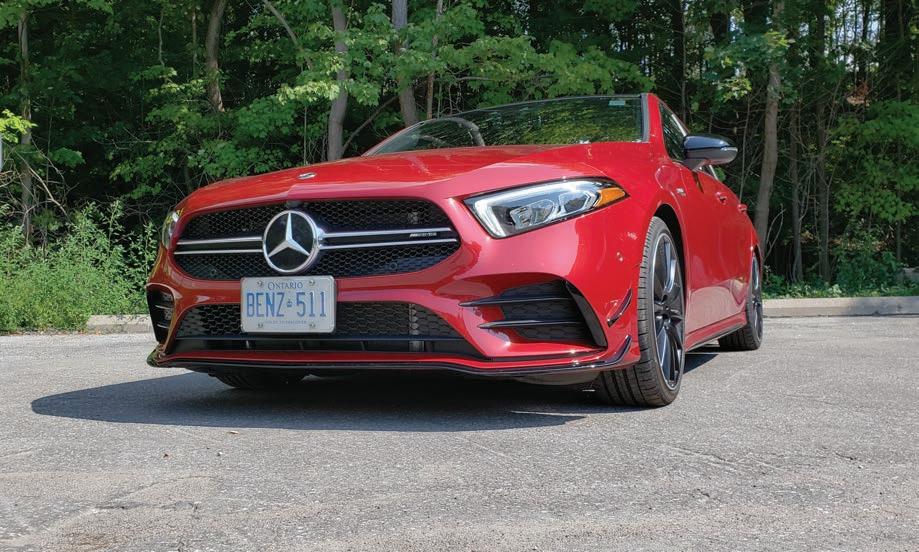
All hail the hatchback
Test driving the 2020 MercedesAMG A 35 4Matic
Long live the hot hatch.
It’s a sentiment that’s largely falling on deaf ears these days. Cars of all kinds, including this all-new 2020 Mercedes-AMG A 35 4Matic hatchback, make up only 20 percent of the automotive market in Canada as buyers go all-in on SUVs and pick-ups. In response, many automakers, including MercedesBenz, are making cuts to the lowerslung products in their portfolios.
In short, Mercedes didn’t have to build this car. If they hadn’t, people would have understood. But they did build it, which means the people who understand and sign on the dotted line for are in for a treat.
Of course, being that it’s a treat that starts at just shy of $50,000 – and this test unit rings in at a tick over $60,000 – it also had better be good.
And it is. The Mercedes-AMG A 35 takes all the individual elements that the brand has been developing throughout its line-up for years and packages them into a single model where they make sense all at once.
The look There’s the ideally proportioned exterior styling, for a start: not so ostentatious that an adult with a family would be embarrassed to own it, but with just enough attitude to show it means business. And on the inside, the designers haven’t shied away from suede-like material, performance pedals, and an optional performance steering wheel, but have instead finessed them all to give them a look befitting the brand.
The 2.0-litre single-turbo fourcylinder suits the character of the car ideally, producing 302hp and 295lbs-ft of torque. The band on the latter is relatively narrow, hitting its peak at 3,000rpm to 4,000rpm, but that makes it ideal for hanging out in second or third gear while flicking through an autocross track or some twisty country roads. The seven-speed, dual-clutch transmission hits like shuffling a deck of cards when using the paddle shifters in the sportier drive modes, and while it’s a crying shame that there is no manual available, it’s high time we all accepted that’s because almost no one would buy it anyway.
By choosing the AMG Driver’s Package ($2,500), buyers add a sport suspension with three-stage damping plus 19-inch wheels and the performance steering wheel with digital drive mode adjustments. Comfort mode renders the throttle slightly numb and keeps the suspension perhaps stiffer than some drivers will enjoy on rougher winter-ravaged roads, but the latter is appropriate for the body style and both attributes are liveable. The Sport and Sport+ modes pick up the slack with incremental responsiveness from the throttle and gearbox along with notably

1.
2.
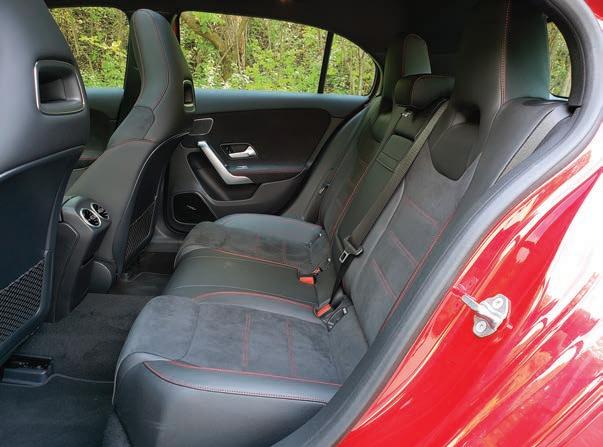
1. Input for the infotainment system is possible through the 12.3-inch touchscreen display or the user interface on the centre console, or thumb pads on the steering wheel.
2. The designers haven’t shied away from suede-like material, while the multi-hue interior lighting system is a visually appropriate fit.
tighter handling. For non-track purposes, Sport mode is definitely the sweet spot.
And all that performance doesn’t come at too horrible of a hit at the fuel pumps, at least according to this test drive. While official fuel efficiency figures are not yet available from Natural Resources Canada, my week of spirited driving netted a result of 9.7L/100km. This car does request premium fuel, but the figure still feels like a fair exchange for the degree of fun it provides.
Voice command As for the rest of the Mercedes box of tricks, this is the first car in which I’ve found the multi-hue interior lighting system to be a visually appropriate fit. And it’s made all the more entertaining by being able to play with it through a voice command to the MBUX infotainment system: “Hey Mercedes, change the interior lighting to blue.” It will be a big hit at parties, once they resume someday.
The rest of the infotainment system works well, with input possible through the 12.3-inch touchscreen display that sits alongside an equally sized digital gauge cluster, or through the user interface on the centre console, or thumb pads on the steering wheel. However, it should be noted that Android Auto and Apple CarPlay – along with other desirable features such as blind spot monitoring, keyless entry, wireless charging, SiriusXM capability and the premium Burmester sound system – require the Premium Package add-on ($3,200). The Navigation Package ($1,000), also equipped here, adds on-board navigation with an augmented reality mode, plus traffic sign assistance and live traffic updates.
If the market keeps trending ever further toward SUVs and trucks and away from cars like this one, hot hatches like the MercedesAMG A 35 may not be long for this world. My advice? If you appreciate driving entertainment in a pocketsized package, snap these up while you still can. FM/SP As Tested
Price (incl. freight and PDI): Starts at $49,200; tested at $60,050 Engine: 2.0-litre turbocharged four-cylinder Power: 302hp; 295lbs-ft @ 3,000 to 4,000rpm Transmission: Seven-speed dual-clutch automatic Rated Fuel Economy (L/100km): TBD Observed Combined Fuel Economy (L/100km): 9.7
Where the rubber meets the road
The importance of tires for your fleet
Drivers of fleet vehicles rarely think of the tires their cars run on until there is a problem such as a flat. However, all drivers should be trained on basic functions and how to inspect their tires because they are an important part of the maintenance team. Fleet managers should consider that tires are one of the top vehicle costs and educate themselves on the variety of manufacturers, models and types of tires.
Functions of tires Tires have several important functions beyond the obvious of providing traction so a vehicle can move down the road and change direction. Tires are an important part of a vehicle’s suspension system and knowing how they support loads is essential for drivers of pickups and trucks. Tires also help to dampen shocks from uneven road surfaces, potholes, hazards and so on. Finally, tires also work with a car’s brakes to stop a vehicle quickly and safely. Brand new brakes will struggle to stop your car if the tires are bald. Tire selection Picking the correct tire requires you to be able to match the tire to the type of vehicle and its service. To do this you need to know how to decipher tire jargon, codes and sidewall information. Consider a tire that has the markings LT255/40 R17 XL 94W M&S. These codes mean the following:
LT denotes the tire type. In this case Light Truck. P would stand for Passenger, T for spare, and ST for Special Trailer. 255 denotes the section width of the tread in millimeters from sidewall to sidewall. 40 refers to the height of the tire in terms of the aspect ratio, meaning percentage of sidewall height to section width. R denotes the tire’s construction as a radial, which applies to most tires these days. 17 refers to the rim diameter in inches XL means the tire has been reinforced to provide a higher load capacity. 94 indicates the load index, which can be found online. A tire with 94 it can support 670kgs. W is the maximum speed rating of the tire, 270kph in this case. M&S stands for mud and snow, meaning this is an all-season tire. Note this is not the same as a winter tire specially constructed for ice, snow and low temperatures. These tires will have a winter tire symbol (mountain with snowflake inside).
Tires also have a serial number, known as a DOT number (for the United States Department of Transportation). This number provides the manufacturer and plant the tire came from, as well as the date of production. The last four numbers indicate the week and year of manufacture. For example, 2018 would indicate that a tire was made in the 21st week of 2018.
All of this information is valuable for fleet managers to use when specifying new vehicles and especially when replacing tires on vehicles already in the fleet. For instance, many pickups today come standard with passenger (P) rather than light truck (LT) tires. Passenger tires provide a smoother and quieter ride but are not the right choice for pickups that will be used for hauling and towing heavy loads.
Tire maintenance Tires have to be inspected and maintained to provide good performance. The primary focus for tire maintenance should be ensuring proper inflation. Under-inflated tires perform poorly, create more rolling resistance which impacts fuel economy and can lead to failure on the road.
All vehicles sold after 2007 are equipped with a tire pressure monitoring system (TPMS). This safety feature was mandated by governments because drivers do such a poor job of checking their tires and this was leading to accidents. The TPMS provides a visual warning when a tire falls below a recommended range – this range is set at 25 per cent by law but can be less depending on the car manufacturer.
The TPMS provides a valuable failsafe for monitoring tire pressure but should never replace regular air pressure checks. Tires that are underinflated by just five per cent begin to suffer from decreased fuel economy and increased internal temperatures. These issues become more pronounced as underinflation increases, so tires can be significantly underinflated without triggering a TPMS alert.
Drivers of fleet vehicles should be asked to check their tires at least on a monthly basis. The proper air pressure can be found on the driver-side door jamb of a vehicle. The maximum pressure that may be listed on a tire should never be used. Fleet managers should equip all of their vehicles with a quality digital or dial pres-
sure gauge. Besides air pressure, monthly inspections of tires by drivers should include tread depth, any uneven wear, imbedded objects and sidewall cracks. Any issues in these areas should be immediately reported to the fleet manager.
Replacing tires Tires that have been properly maintained will provide service for tens of thousands of kilometres. However, all tires wear out and eventually have to be replaced. The primary reason tires have to be replaced is that the tread has worn down to an unsafe level. The legal limit of wear is 1.6mm or 2/32nds of an inch of tread depth. But most tire makers recommend tires be replaced before the legal limit of wear is reached to ensure better performance such as in wet weather. Many fleets will replace tires before the tread reaches 3.2mm or 4/32nds of an inch.
Tires can also wear out from shear age as the rubber and other compounds deteriorate. Michelin recommends replacement of tires after 10 years. Other manufactures have lower standards, particularly for severe duty such as hauling heavy loads and running off road.
When buying new tires, fleet managers should start by considering if a passenger or light-truck tire is needed. Passenger tires are fine for most vehicles, including many SUV and pick-up trucks. These tires provide higher comfort ratings, lower noise levels and better fuel economy. Some pick-up and SUV’s require a more robust light-truck tire for hauling heavy loads and driving on rough terrain.
When replacing tires, fleet managers should do their homework about which tires and tire brands best fit their operations, including geographical area, weather conditions, service needs, driver habits and budget. Some tire manufacturers have better reputations for quality and longevity than others. This quality comes with a higher price, of course.
Fleet managers should also consider ratings for tire treadwear, traction and temperature. These ratings, which are most useful to compare models within – rather than between – manufactures, can be provided by your tire dealer. Also plan to have new valve stems installed when tires are replaced. SP
Randy Owen is senior manager, fleet practice lead, Matrix Consulting Group.





